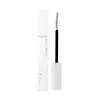What's inside
What's inside
 Key Ingredients
Key Ingredients

 Benefits
Benefits

 Concerns
Concerns

 Ingredients Side-by-side
Ingredients Side-by-side

Isododecane
EmollientSynthetic Wax
AbrasiveHydrogenated Polyisobutene
EmollientPolyethylene
AbrasiveMicrocrystalline Wax
Emulsion StabilisingParaffin
PerfumingGlyceryl Abietate/Maleate
Skin ConditioningCopernicia Cerifera Wax
Dextrin Palmitate
EmulsifyingNylon-6
Water
Skin ConditioningPolyglyceryl-2 Diisostearate
EmulsifyingMalic Acid
Buffering1-Naphthaleneacetic Acid
Skin ConditioningMelaleuca Alternifolia Leaf Oil
AntioxidantButylene Glycol
HumectantOlea Europaea Fruit Oil
MaskingSilica
AbrasivePhenoxyethanol
PreservativeSodium Dehydroacetate
PreservativeMethylparaben
PreservativeCI 77266
Cosmetic ColorantIsododecane, Synthetic Wax, Hydrogenated Polyisobutene, Polyethylene, Microcrystalline Wax, Paraffin, Glyceryl Abietate/Maleate, Copernicia Cerifera Wax, Dextrin Palmitate, Nylon-6, Water, Polyglyceryl-2 Diisostearate, Malic Acid, 1-Naphthaleneacetic Acid, Melaleuca Alternifolia Leaf Oil, Butylene Glycol, Olea Europaea Fruit Oil, Silica, Phenoxyethanol, Sodium Dehydroacetate, Methylparaben, CI 77266
Isododecane
EmollientTrimethylsiloxysilicate
EmollientMethyl Trimethicone
Skin ConditioningSynthetic Wax
AbrasiveDextrin Palmitate
EmulsifyingMicrocrystalline Wax
Emulsion StabilisingBeeswax
Emulsion StabilisingParaffin
PerfumingIsostearic Acid
CleansingCopernicia Cerifera Wax
Petrolatum
EmollientOctyldodecyl Isostearate
Skin ConditioningPentaerythrityl Hydrogenated Rosinate
Polyethylene
AbrasiveTocopherol
AntioxidantCamellia Seed Oil
Olea Europaea Fruit Oil
MaskingSimmondsia Chinensis Seed Oil
EmollientSqualane
EmollientPanthenol
Skin ConditioningAlcohol Denat.
AntimicrobialWater
Skin ConditioningRoyal Jelly Extract
Skin ConditioningPhenoxyethanol
PreservativeSilica
AbrasiveTalc
AbrasiveMica
Cosmetic ColorantCI 77492
Cosmetic ColorantIsododecane, Trimethylsiloxysilicate, Methyl Trimethicone, Synthetic Wax, Dextrin Palmitate, Microcrystalline Wax, Beeswax, Paraffin, Isostearic Acid, Copernicia Cerifera Wax, Petrolatum, Octyldodecyl Isostearate, Pentaerythrityl Hydrogenated Rosinate, Polyethylene, Tocopherol, Camellia Seed Oil, Olea Europaea Fruit Oil, Simmondsia Chinensis Seed Oil, Squalane, Panthenol, Alcohol Denat., Water, Royal Jelly Extract, Phenoxyethanol, Silica, Talc, Mica, CI 77492
Ingredients Explained
These ingredients are found in both products.
Ingredients higher up in an ingredient list are typically present in a larger amount.
Copernicia Cerifera Wax comes from a palm tree native to Brazil; another name for this ingredient is Carnauba Wax.
This ingredient is used to thicken texture and also leaves behind a film when applied.
Fun fact: This wax has the highest melting point of all natural waxes and low solubility.
Learn more about Copernicia Cerifera WaxDextrin Palmitate comes from the palmitic acid ester of Dextrin. It is used as an emulsifier and texture enhancer.
Emulsifiers help keep ingredients together. According to a manufacturer, dextrin palmitate helps create a low-viscosity gel texture.
Due to its fatty acid base, this ingredient is not fungal-acne safe.
Learn more about Dextrin PalmitateIsododecane is a fragrance, emollient, and solvent.
As an emollient, it helps your skin stay soft and hydrated. Emollients help trap moisture into your skin.
Isododecane's role as a solvent makes it a great texture enhancer. It spreads smoothly on skin and does not leave a sticky feeling behind. Isododecane also helps prevent color transfer in makeup products.
Isododecane is not absorbed into skin.
Learn more about IsododecaneMicrocrystalline Wax is created by de-oiling petroleum. It is highly refined and purified before being added to cosmetics.
Microcrystalline Wax is used to enhance the texture and create even consistency. It helps stabilize a product by preventing ingredients from separating.
Olea Europaea Fruit Oil is the fixed oil obtained from the ripe fruit of the Olive. In other words - olive oil.
The primary contents of olive oil are glycerides of the fatty acids linoleic, oleic and palmitic.
Olive oil also contains antioxidants such as Vitamin E. Antioxidants may help reduce signs of aging by fighting unstable free-radical molecules. It also contains Vitamins A (retinol), D, and K.
The squalene in olive oil makes it a great emollient. Emollients help soothe and soften your skin by trapping moisture in. This makes olive oil a great skin moisturizer.
Studies show olive oil to have antibacterial and antifungal properties in low concentrations. Another study found olive oil irritated sensitive oily skin. We always recommend speaking with a professional about using this ingredient in your routine.
Due to the fatty acid content, this ingredient may not be fungal-acne safe.
Learn more about Olea Europaea Fruit OilParaffin is a solid created from petroleum. The term 'paraffin' can also refer to either
petroleum jelly or mineral oil.
It has natural occlusive properties which can worsen oily skin. Due to its petrolatum base, this ingredient is not fungal-acne safe.
Phenoxyethanol is a preservative that has germicide, antimicrobial, and aromatic properties. Studies show that phenoxyethanol can prevent microbial growth. By itself, it has a scent that is similar to that of a rose.
It's often used in formulations along with Caprylyl Glycol to preserve the shelf life of products.
Polyethylene is a synthetic ingredient that helps the skin retain moisture. It is a polymer.
It is also typically used within product formulations to help bind solid ingredients together and thicken oil-based ingredients. When added to balms and emulsions, it helps increase the melting point temperature.
Silica, also known as silicon dioxide, is a naturally occurring mineral. It is used as a fine, spherical, and porous powder in cosmetics.
Though it has exfoliant properties, the function of silica varies depending on the product.
The unique structure of silica enhances the spreadability and adds smoothness, making it a great texture enhancer.
It is also used as an active carrier, emulsifier, and mattifier due to its ability to absorb excess oil.
In some products, tiny microneedles called spicules are made from silica or hydrolyzed sponge. When you rub them in, they lightly polish away dead skin layers and enhance the penetration of active ingredients.
Learn more about SilicaSynthetic Wax is created from fossil fuels such as natural gas. It is used to enhance texture, adjust pH, and as an occlusive.
It may also be used as an abrasive ingredient to exfoliate the skin.
Synthetic Wax may not be fungal acne safe.
Learn more about Synthetic WaxWater. It's the most common cosmetic ingredient of all. You'll usually see it at the top of ingredient lists, meaning that it makes up the largest part of the product.
So why is it so popular? Water most often acts as a solvent - this means that it helps dissolve other ingredients into the formulation.
You'll also recognize water as that liquid we all need to stay alive. If you see this, drink a glass of water. Stay hydrated!
Learn more about Water